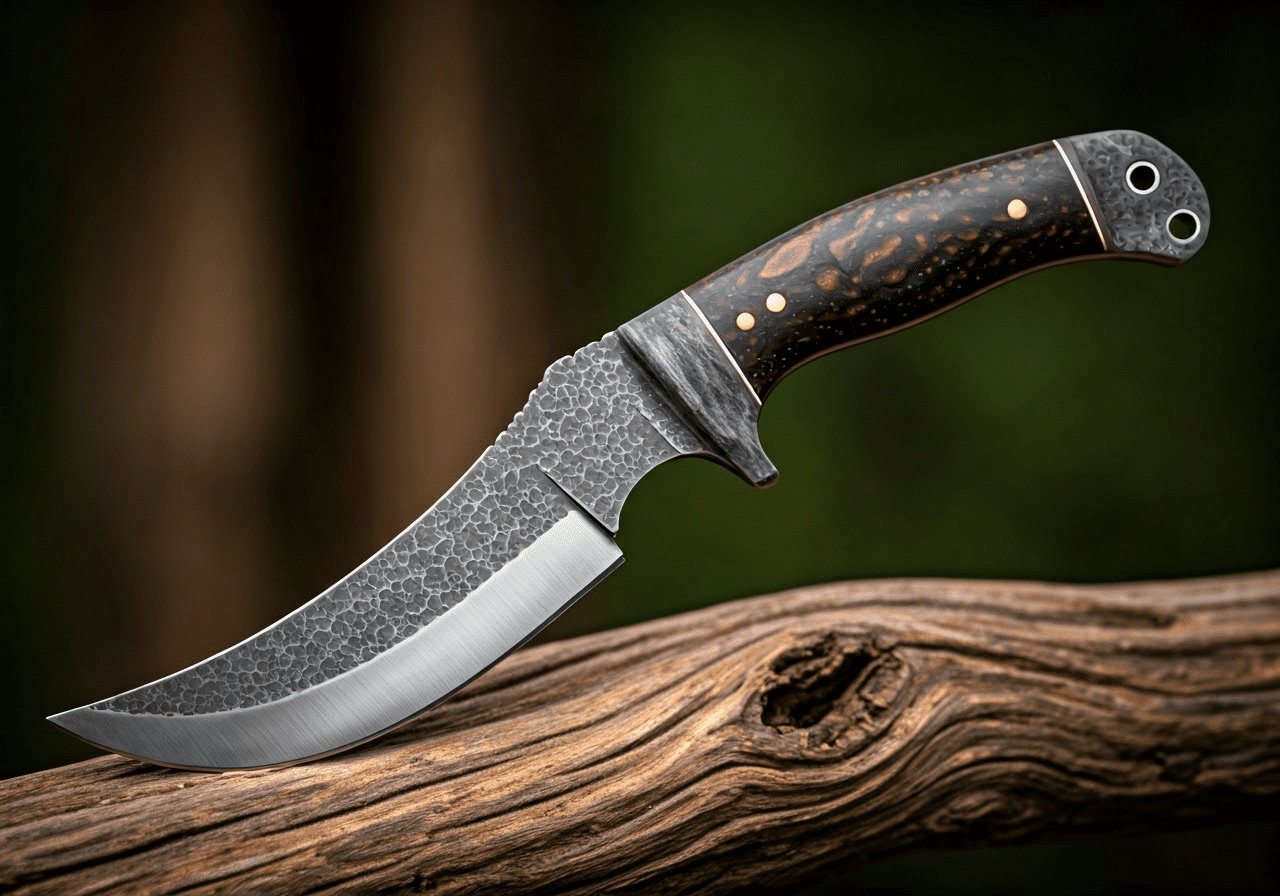Table of Contents
Key Highlights
- The curved blade of a hunting knife offers practical advantages for skinning and field dressing game.
- The shape facilitates a smoother, more efficient cutting action along the contours of an animal’s body.
- A curved blade can also be useful for specific hunting tasks, such as skinning, carving, and even self-defense in survival situations.
- Different types of curves, such as those found in drop point or skinner blades, are tailored for specific hunting needs.
- Understanding the design evolution and physics behind curved blades highlights their enduring relevance for modern hunters.
Introduction
Hunting knives are important tools for anyone who enjoys the outdoors. They often have a curved type of blade. This unique shape may confuse some people, but it is very useful. The curve is not just about how the knife looks. It actually helps make hunting tasks easier and quicker. This is especially helpful when preparing big game, like skinning and field dressing. The design is made to improve how you use the knife in the field.
The Evolution of Hunting Knife Design

Early hunting knives had simple designs. They were mainly made for survival. As hunting changed, the need for special tools grew. This led to better designs for hunting knives.
One major change was adding a curved blade. This was important for better skinning and butchering. With this new design, people learned more about animal anatomy. They also realized how important it was to keep meat quality high. The curve made cutting easier and cleaner. It helped reduce damage to the hide and increased the amount of good meat that could be used.
Historical Significance of Curved Blades in Hunting
The history of curved blades in hunting goes back many years. Ancient people all over the world, like Native American tribes and early hunters in Europe, saw the benefits of a curved type of blade for preparing their game.
Over time, hunting knives changed a lot. As hunting went from just a way to survive to a more skilled practice, the tools improved too. Curved blades became more common as hunters learned more about techniques and animal anatomy.
This connection between their design and use helped make the curved blade important in hunting history. It became a symbol of the craft of hunting, showing the knowledge passed down through many years.
Modern Innovations and Materials
Advancements in metalwork and how things are made have given us modern hunting knives. These knives are now tougher, sharper, and resist rust better. The classic curved shape is still there, but new types of steel and handle materials have made these knives work much better.
The curved blade design is not just for hunting knives. In cooking, we see knives like santoku knives that also have curved blades. This shows how versatile and efficient this shape can be for different cutting tasks.
Today’s hunting knives combine old styles with new ideas. The traditional curved blade remains, but using better materials and methods means these knives are now more capable than ever to meet what today’s hunters need.
Understanding the Curve: Form Meets Function
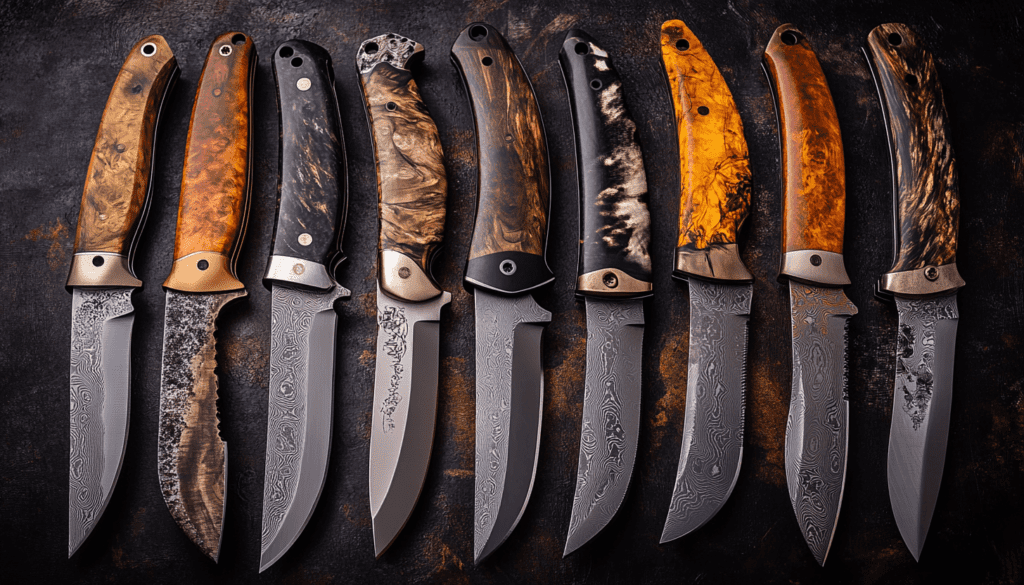
The curved blade of a hunting knife is more than just a pretty design. It helps the knife work well when preparing animals after a hunt. The blade’s shape lets it slide easily along the animal’s body. This makes it easy to separate the skin and muscle without using too much effort.
This design also lowers the chance of accidentally hurting important organs. This way, the meat stays clean and ready to eat. In the end, the curved blade is a perfect mix of style and purpose, making it a key tool for hunters.
The Physics Behind Curved Blades
The way a curved blade works can be seen in basic physics. When you use a curved blade on a cutting board, the force you use creates a slicing action. The curved shape spreads the pressure over a bigger area. This makes it easier to cut through tough things like hide and bone.
Additionally, the curve helps guide the cutting motion. It stops the blade from sticking and reduces resistance. This natural rocking motion is really helpful when skinning an animal. It keeps a steady depth and protects the hide from damage. This good use of force, along with a smooth slicing action, makes curved blades much better for skinning, filleting, and butchering.
Comparison with Straight-Edged Knives
While hunting knives usually have a curved blade, straight-edged knives are better for stabbing or piercing. For example, a thick blade with a straight edge is great for getting through tough hide or for self-defense in survival situations.
Yet, when skinning an animal on a cutting board, a straight-edged blade has some limits. It cannot move in a natural rocking way like a curved blade. This makes it less efficient for tasks that require following the shapes of an animal’s body.
In the end, choosing between a curved and a straight-edged blade depends on what you need to do. A curved blade works well for skinning and butchering, while a straight edge is better for strong thrusts.
Types of Curved Hunting Knives

The world of hunting knives has many different curved blade designs. Each design is made to work better for certain hunting tasks. Two common types are the classic skinner and the drop point knife.
Knowing the details of each design can really help you hunt better. This is important whether you are dressing big game or getting food ready for a campfire meal.
The Classic Skinner
The classic skinner is well named because of its uniquely curved blade. This blade is perfect for removing an animal’s hide. It does this without hurting the meat. Many hunters like this design because they want to keep the hide for tanning or other uses.
The curve of the blade helps hunters make long, smooth cuts along the animal’s body. This reduces the chance of cutting into the meat by mistake. This efficiency is very helpful when hunting big game. One wrong cut could damage valuable parts of the hide.
Hunters choose the classic skinner for its special design and effectiveness. It is great at separating skin from flesh cleanly and quickly. This tool is important for any hunter who values a good and precise skinning process.
The Drop Point and Its Versatility
The drop point blade is a favorite among hunters because it is very versatile. It has a curved top that slopes down to a strong tip. This design makes it great for skinning, slicing, and even piercing tasks.
The drop point’s special shape gives it this versatility. The lowered tip offers better control for careful tasks, like field dressing. Meanwhile, the overall curve helps with skinning.
Whether you’re preparing a fresh catch by the river or dressing big game, the drop point hunting knife is a trusted tool for many hunting situations. This reliability makes it popular with both experienced and new hunters.
What is the best shape for a hunting knife?
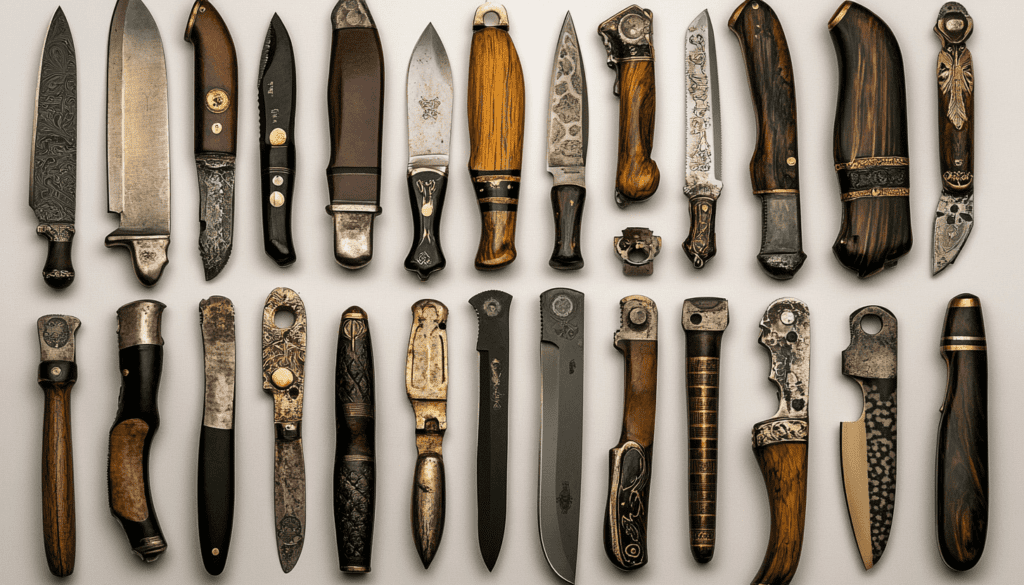
The best shape for a hunting knife depends on how you plan to use it. There is an old saying, “the right tool for the job,” that fits well here. If you need to skin an animal, a curved blade works best. Good choices include the classic skinner or a drop point knife.
On the other hand, if you need to pierce something tough, a straight blade is better. This type of blade helps you get through thick skin or can be useful in survival situations. In the end, the perfect hunting knife shape fits the hunter’s needs and the type of game they hunt.
Why do hunting knives have holes in them?
Holes in hunting knives are usually found near the base of the blade. They have a useful purpose. These holes, called “lanyards,” help you attach cords or straps. This gives a better grip and stops the knife from slipping out of your hands, especially in slippery conditions.
Besides being practical, lanyard holes can also look nice. You can add detailed designs or decorations. This adds a personal touch and shows the good craftsmanship found in high-quality hunting knives.
Why do hunting knives have grooves?
Grooves on a hunting knife blade are called “fullers” or “blood grooves.” Many people think their main job is to drain blood. However, that’s not true. The real purpose of fullers is to make the blade lighter while keeping it strong.
By taking away some metal, fullers help create a lighter blade that is stronger for its weight. This makes the knife easier to use and handle, especially during long tasks. Moreover, fullers can help reduce friction. This leads to smoother cutting and stops the knife from sticking.
What angle are most hunting knives?
The angle at which a hunting knife is sharpened, known as the “blade angle,” plays a crucial role in its performance and durability. Most hunting knives are sharpened to angles between 20 and 30 degrees, striking a balance between sharpness, edge retention, and overall strength.
|
Blade Angle |
Advantages |
Disadvantages |
|
20 degrees |
Excellent sharpness, ideal for slicing and skinning |
Less durable edge, prone to chipping or rolling |
|
30 degrees |
Increased edge durability, can withstand heavier use |
Slightly less sharp, may require more force for cutting |
The ideal blade angle depends on the intended use and the type of game pursued. A sharper angle (20 degrees) excels in delicate tasks like skinning and filleting, while a more obtuse angle (30 degrees) is preferable for heavier tasks such as cutting through bone or cartilage.
Why do hunting knives have serrated edges?
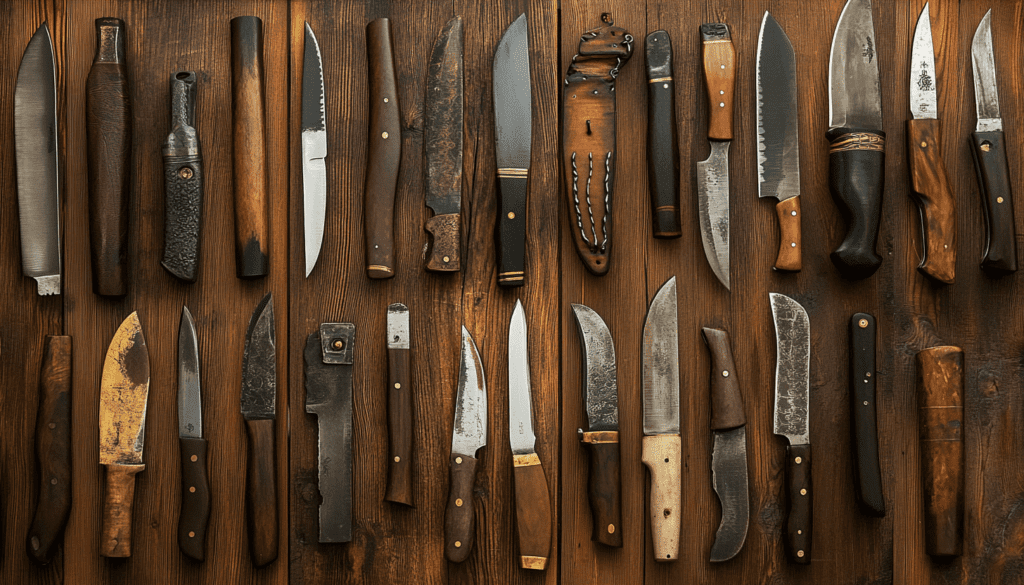
Serrated edges on hunting knives have saw-like teeth. They are made to cut tough or fibrous materials easily. These serrations are great for cutting rope, bone, and wood. They add more versatility in survival situations.
But there is a downside. Serrations are not as good as plain edges for skinning or field dressing. The teeth can tear the hide and meat, making them less quality. Therefore, serrations on hunting knives are better for secondary tasks or survival situations.
What is the bent knife for?
“Bent knife” usually means knives that have a certain blade shape. This shape is made for a special task. Without more details, it is hard to say exactly what it’s for. Some possible uses are:
- Skinning knives: These have a curved blade. They are made to remove animal hides easily. They help take off the skin without hurting the meat below.
- Boning knives: These have a thin, slightly curved blade with a sharp tip. They are good for working around bones and cartilage. They are very useful for butchering meat.
Knowing the design and features of a “bent knife” is important. It helps you understand what it is used for and how to use it well.
Is a hunting knife sharp?
A hunting knife needs to be sharp for it to work well and be safe. A sharp knife cuts easily and makes clean cuts. This is important for skinning animals and keeping meat nice.
On the other hand, a dull knife can be unsafe and hard to use. It might slip or need a lot of effort, which raises the chance of getting hurt and makes rough cuts. To keep a hunting knife sharp, you need to sharpen and hone it regularly. This will help it work better and stay safe when you are in the field.
What is the difference betweena hunting knife and a kitchen knife?
A hunting knife is made for outdoor tasks like hunting and camping. It has a curved blade that helps in skinning and dressing animals. A kitchen knife, on the other hand, is mostly used for preparing food. It has a straight blade that works well for slicing and chopping various ingredients.
What are the benefits of a curved knife?
Curved knives have special benefits, especially for slicing, skinning, and working with shapes. The curved blade allows a rocking motion, making it easier to cut smoothly with less effort. This makes them perfect for jobs like filleting fish or skinning animals.
Also, the curved design helps direct the cutting path. This keeps the blade from sticking and cuts down on friction. So, you get cleaner cuts that keep delicate ingredients in good shape and improve overall cutting accuracy.
Why are the craving knives rounded?
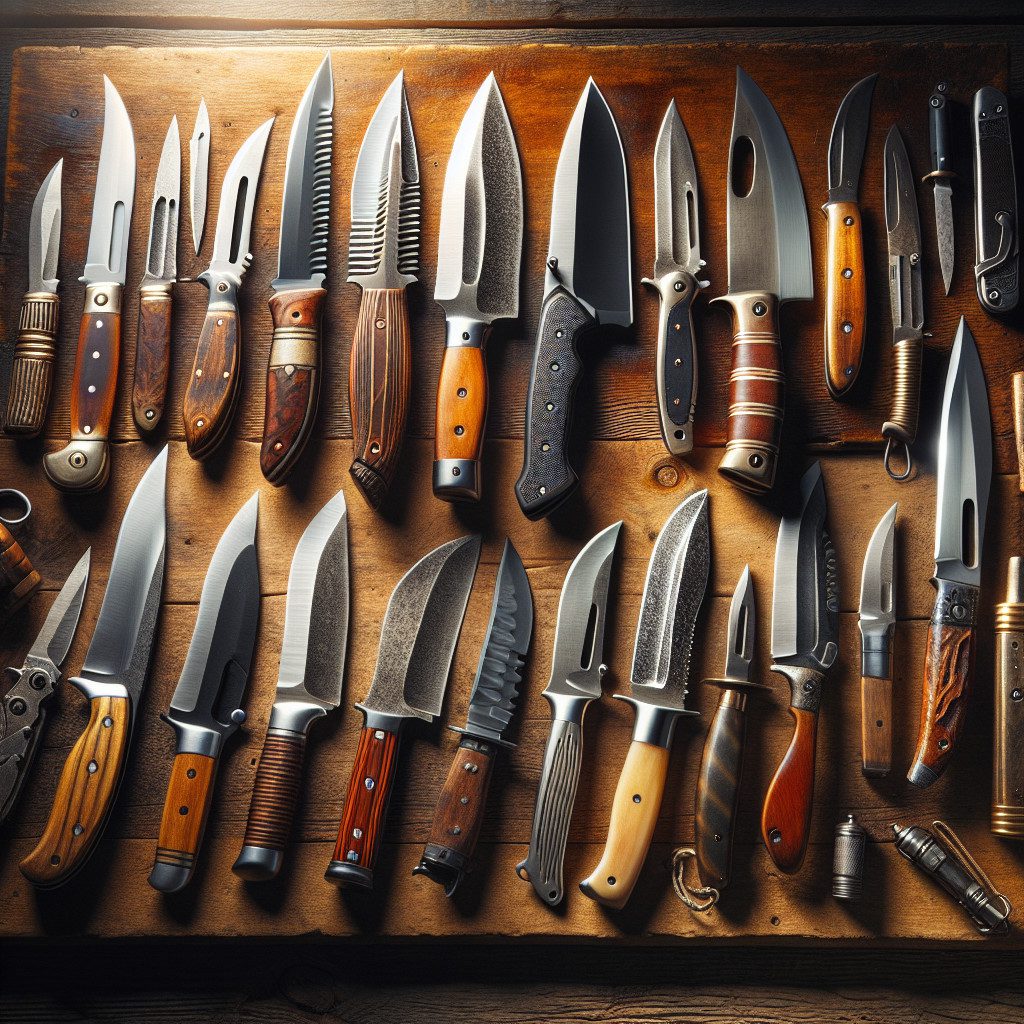
The phrase “craving knives” might be a mistake. If you mean “carving knives,” then the rounded blade has a special use in cooking. The slight curve helps with long, smooth cuts. This is great for slicing cooked meat, chicken, or roasts into thin, even pieces.
The rounded tip stops the meat from tearing by accident. This way, you get nice-looking slices when serving. The shape also makes a rocking motion easier, helping you to get the same thickness every time you carve.
Why are butcher knives curved?
Butcher knives are made for cutting large pieces of meat. They usually have a curved blade that helps with efficiency and accuracy. The curve makes it easier to rock and slice, cutting through bone, cartilages, and tough tissues.
This curve is also helpful for skinning and trimming big cuts of meat. It allows for smoother movements and cleaner cuts when separating meat from bone. Because of their versatile design, butcher knives are essential tools for both professional butchers and home cooks.
What makes a knife a hunting knife?
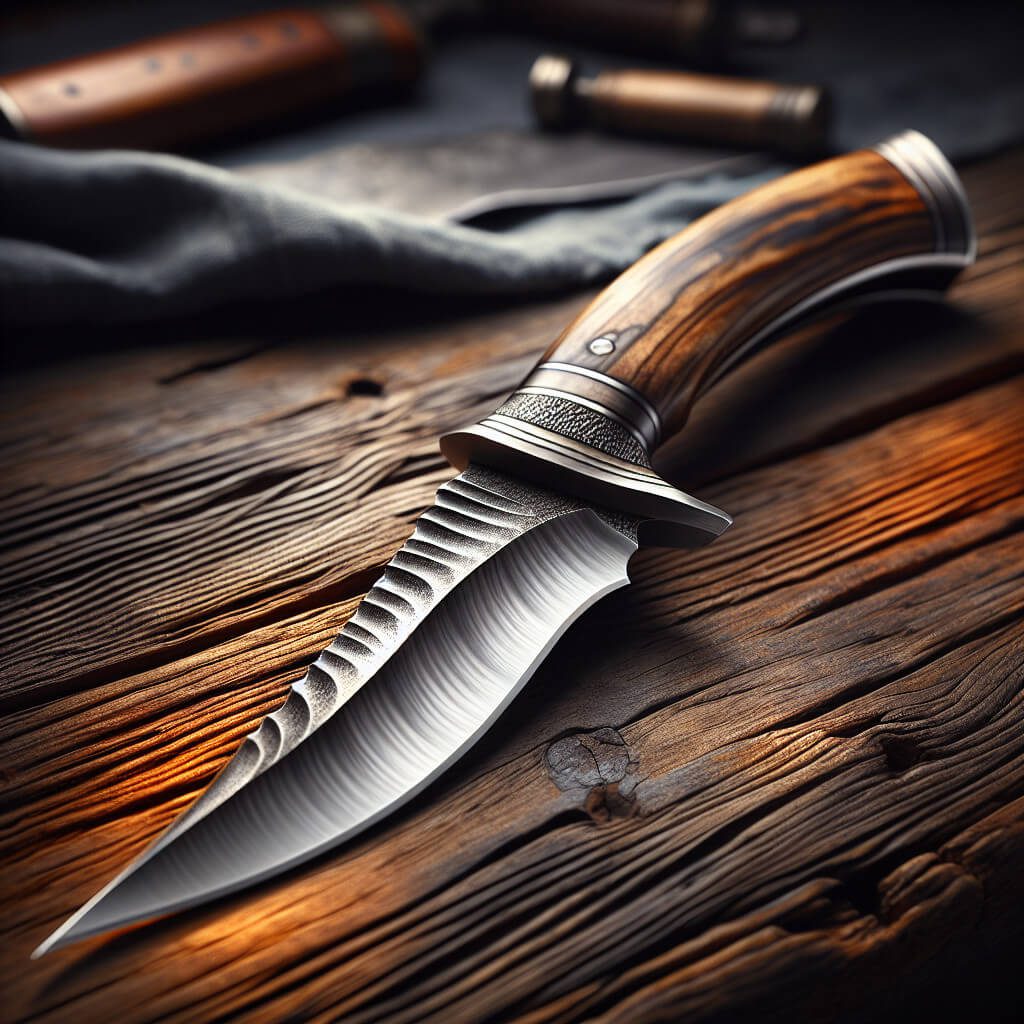
A hunting knife is made for a specific purpose: helping hunters prepare game. This purpose affects its unique design features that make it different from other knives. A hunting knife usually has a strong, full tang build to handle outdoor conditions. It often has a gut hook or sawback to be more useful.
The shapes of the blade can change depending on what a hunter needs. Common choices include drop point, clip point, or skinner blades. Each one is designed for specific tasks like skinning, piercing, or general use. In the end, it is the mix of its carefully planned design, tough build, and special blade shape that makes a knife a good hunting tool.
Frequently Asked Questions
Why Do Hunters Prefer Curved Knives for Skinning Game?
Hunters typically like curved knives for skinning animals. These knives work better in the field. The curve in the blade helps it move along the animal’s shape. This design speeds up the skinning process and protects the hide and meat from harm.
Conclusion
In conclusion, the curved design of hunting knives has a clear purpose based on history and function. The shape gives them an advantage in hunting tasks. Curved hunting knives have shown their value over the years. Learning about their past and new designs helps us see how effective they are for hunters. Whether it is the classic skinner or the drop point, these curved blades improve precision and control when dressing and skinning game. By appreciating the tradition and usefulness of curved hunting knives, we show respect for the skill and art of hunting.


